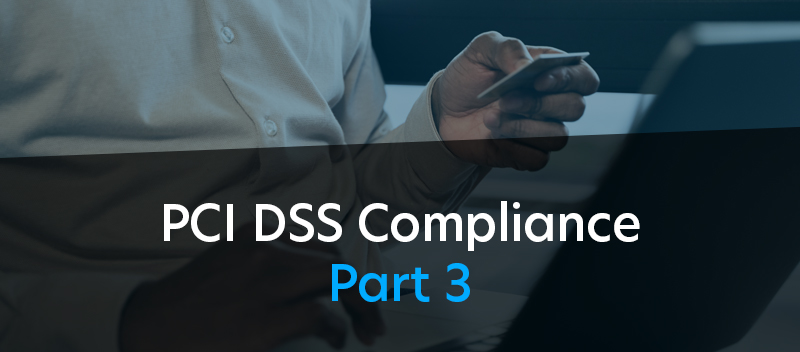Blog Common Web Application Attacks
Common Web Application Attacks

A significant portion of the daily business operations that your organization conducts rely heavily on the web. It is the home of cloud-based digital storage and the repository of data. It holds the information that customers voluntarily provide via content management systems, shopping carts, login fields, and inquiry and submit forms.
As universal and convenient as these programs are, they are highly vulnerable to web application attacks from cybercriminals.
It is essential for those who deal with security matters to know how web programs work, and the most widespread issues related to those programs. Therefore, it will contribute to outwitting cyber criminals and protecting companies with their clients’ information from being stolen among others while also ensuring that no unauthorized person gets into such systems.
How Do Web Applications Work?
Web applications do their job by first querying a content database and generating a web document according to the client’s specifications.
The information is presented so that it is accessible to all browsers, which run every script and make the document both readable and dynamic.
Web applications requiring little to no work to install on the user’s end can be purchased by companies ready-made or customized to meet a business’s unique specifications.
Web-Based Attacks Defined
When criminals exploit vulnerabilities in coding to gain access to a server or database, these types of cyber vandalism threats are known as application-layer attacks. Users trust that the sensitive personal information they divulge on your website will be kept private and safe.
Intrusion in the form of web-based attacks can mean that their credit card, Social Security, or medical information might become public, leading to potentially grave consequences.
Web applications are particularly susceptible to hacking because they are available 24 hours a day, 365 days a year, to provide continuous services. Because these applications must be publicly accessible, they cannot be safeguarded behind firewalls or secured from threats with SSL.
Many of these programs have access, either directly or indirectly, to highly desirable customer data. Hackers make it their business to seek out vulnerabilities so that this information can be stolen or rerouted. Seeking to prevent web application attacks should be a critical priority for your IT security team.
Most Common Types of Web Attacks
Although the tactics of cybercriminals are constantly evolving, their underlying attack strategies remain relatively consistent.
Below are some of the most common types:
-
- Cross-site scripting (XSS): This involves an attacker uploading a piece of malicious script code onto your website that can then be used to steal data or perform other kinds of mischief. Although this strategy is relatively unsophisticated, it remains quite common and can do significant damage.
- SQL Injection (SQLI): This happens when a hacker submits destructive code into an input form. If your systems fail to clean this information, it can be submitted into the database, changing, deleting, or revealing data to the attacker.
- Path traversal: Also resulting from improper protection of data that has been inputted, these webserver attacks involve injecting patterns into the webserver hierarchy that allow bad actors to obtain user credentials, databases, configuration files, and other information stored on hard drives.
- Local File Inclusion: This relatively uncommon attack technique involves forcing the web application to execute a file located elsewhere on the system.
- Distributed Denial of Service (DDoS) attacks: Such destructive events happen when an attacker bombards the server with requests. In most cases, a network of hacked computers or bots is used by hackers to launch the offense. This renders your server useless and denies legitimate visitors access to your services.
Although bad actors don’t generally compromise data through these means, they often use it to “distract” your automated systems, leaving you vulnerable to other malware and criminal activities.
Protecting Against Website Attacks
There are many advantages in a company’s capability of capturing as well as storing customer data via Internet resources, yet leaving it vulnerable to cyber criminals.
Fortunately, there are methods you can employ to provide analysis and protection for your site and its underlying servers and databases:
-
- Automated vulnerability scanning and security testing: Consider these solutions that help you recognize, investigate, and resolve vulnerabilities that might culminate in a cyber incident.
- Web Application Firewalls (WAFs): These operate on the application layer and use rules and intelligence about known breach tactics to restrict access to applications. Because they can access all layers and protocols, WAFs can be highly effective gatekeepers when it comes to shielding resources from attack.
- Secure Development Testing (SDT): This is designed for all security team members, including testers, developers, architects, and managers. The new methods attackers are using are described in detail, and it helps the task force to come up with a feasible approach to averting website attacks and limiting breaches from having a huge impact.
The prevention, control, and mitigation of web application attacks is a full-time job. Mounting a multi-pronged defense consisting of technology, automated programs, and human expertise will allow you to monitor, analyze, detect, and neutralize threats of all kinds quickly and effectively.
TrustNet’s Penetration Testing Services
Penetration testing plays a crucial role in avoiding web attacks. Undertaken as “ethical hacking,” it imitates hackers’ methods and techniques to find vulnerabilities before they can be exploited. For cybersecurity, it is imperative that businesses ensure the safety of their information technology infrastructure and appropriate vulnerability patching.
The goal of a penetration test is to ascertain whether and how information assets may be accessed without authorization by a malevolent user. For over ten years, TrustNet has been doing penetration testing to help businesses find unforeseen security flaws.
Learn more about TrustNet’s Penetration Testing Services today.




